In Japanese folklore, many stories include spirits, supernatural creatures, and demons called yokai. And of all the yokai, the tengu is the one that might seem most familiar to a modern Westerner. At first glance, it's a lot like a superhero: the ability to fly, great physical strength, magical powers, and secret martial arts skills. But the tengu is no comic book creation - it has a long history and deep connections to Japanese culture and religion.
- 天狗(てんぐ)
- tengu, long-nosed goblin
Like the kitsune and tanuki, the tengu started out as an animal, but its evolution has taken more twists and turns. And like the kitsune’s connection to Shinto, it has a close relationship to another Japanese religion, Buddhism. The relationship is not a happy one, though. Tengu are sworn enemies of the Buddhist faith, and much of their history has been spent trying to lure people off the road to enlightenment.
Tengu are more like minor gods than other trickster yokai - and they expect you to treat them as such. Come along and we'll guide you through this rich and important part of Japanese folklore.
Types of Tengu
Though you may be familiar with the red-faced long-nosed tengu, it may surprise you to learn there are two different types. And the one that came first is considered lesser than the newer yokai.
1. Daitengu

The Great Tengu or daitengu 大天狗 is an imposing semi-human whose most prominent feature is a long nose and large wings. You've probably seen pictures of the bright red, long-nosed mask that represents the face of the daitengu. When we say "tengu" nowadays, this is the one we mean. They live in deep mountain forests, and particular mountains are said to be the homes of particular, named daitengu. Some of their powers, like possession, are shared with other yokai, but their special skills include control of wind, swordsmanship, and flight. Daitengu often abduct humans, sometimes to torment them, but other times to teach them magic. Humans may even seek out daitengu to learn their secrets, but as we’ll see later, they often regret it.
Along with the red face, long nose, robes, and wings, the daitengu may be depicted holding the large fan that they use to stir up huge winds. They are said to cause wars and natural disasters. With their proud nature and penchant for chaos and savagery, it’s no wonder several writers have made connections between daitengu and human society.
2. Kotengu
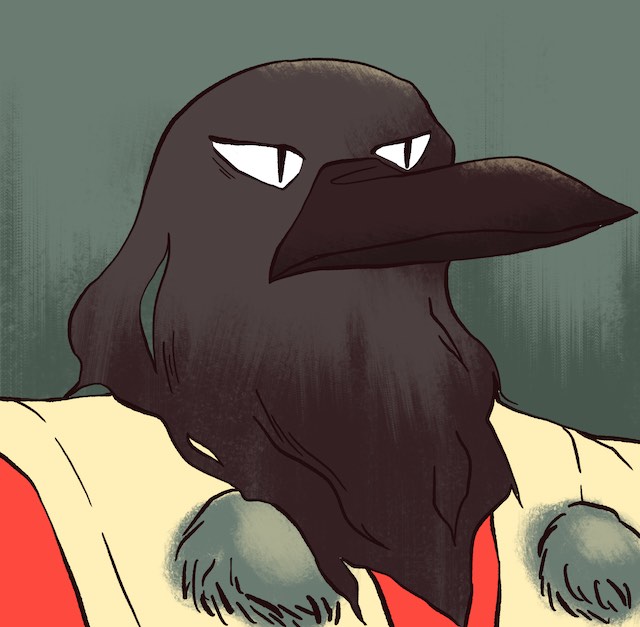
The other type is called kotengu 小天狗 (lesser tengu) or karasutengu 烏天狗 karasutengu. Karasu means crow, but these tengu may also take the form of birds of prey, especially the black kite (tobi 鳶). They also wear monk's robes, but kotengu are much more animal-like both in their appearance and their behavior. While daitengu contemplate disrupting human society and interfering with religion, the kotengu are smaller scale. The main thing you have to worry about is that they’ll eat you. In some folktales, they’re depicted as easy to fool, something you don’t want to try with a daitengu.
Nowadays the kotengu are sometimes considered servants of the daitengu, but that’s not how it started out. The kotengu is actually the old-school version of the tengu. In other words, originally the bird-like tengu was the only type there was. But as the goblin's significance changed and developed, they became more human, with the long nose becoming a humanized beak.
But even as the new human-like tengu emerged, the old bird-like image stuck around. So we ended up with two kinds of tengu in the modern era. Even though the kotengu is the original, it’s now secondary. The most interesting stories are about the powerful, intelligent, dangerous, proud, human-like daitengu.
Tengu Evolution
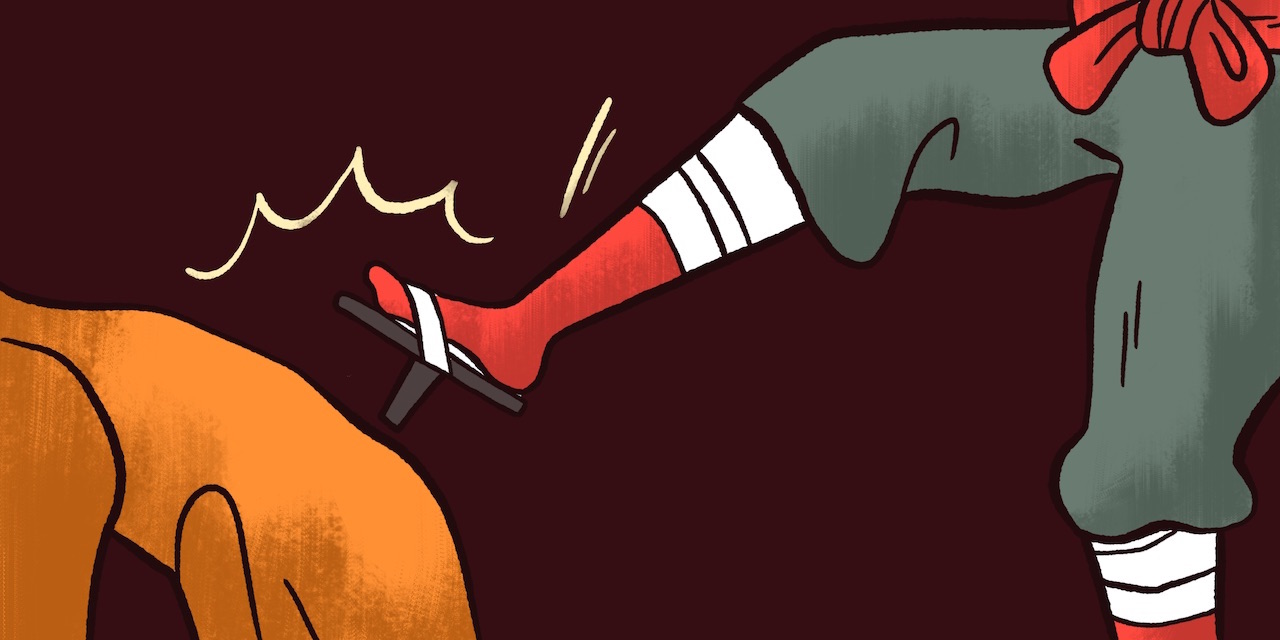
Early tengu stories share a lot of features with other yokai tales. In the 9th and 10th centuries, they are trickster mountain demons, doing regular yokai things: luring people into the woods with the sound of music, throwing pebbles at houses, and appearing as will-o-the-wisp. Tengu possessed illiterate people, which became obvious when they suddenly gained the ability to write kanji. They were also big on causing fires. As one writer puts it, "Everything strange and mysterious is attributed to them," which is pretty much your basic definition of yokai.
That isn't exactly the powerful demon we know today. In the earliest tales, tengu were easy to defeat. In one story that showcases their shapeshifting powers, a Buddha appears in a tree surrounded by a bright light and a rain of flowers. A clever minister suspects the trick, sits down, and stares at it for an hour. The tengu's power withers and it turns into a kestrel and falls out of the tree with its wings broken. Not too difficult. If staring at something for an hour were a martial art, who wouldn’t have a black belt?
That story contains the germ of how this yokai developed differently from other yokai: their connection to Buddhism. Tengu have come to play a special role as an enemy of the faith.
11th and 12th Centuries
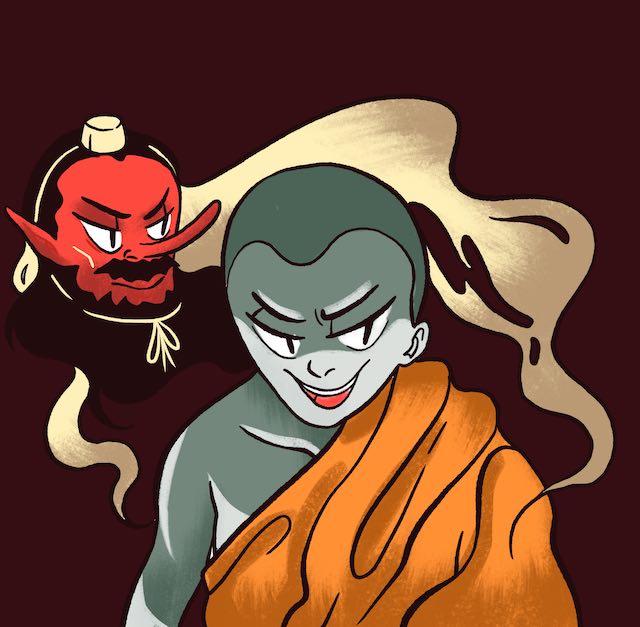
By the 11th century, many tengu legends have developed, and are collected in 31 volumes called Konjaku Monogatari (only 28 volumes are still in existence). In these stories we see their shapeshifting into Buddha to delude monks. Abduction of Buddhist priests was already one of their favorite tricks, as well as trying to fool them into gaining power from tengu instead of taking the real path to enlightenment.
What must have been tempting for those monks was the yakai's supernatural powers actually worked. In one story, a yamabushi mountain priest cures a sick emperor, but the emperor's resident priests become suspicious and start chanting at him. Hurtling to the floor, the yamabushi cries out for forgiveness:
"All these years I've worshipped the tengu and prayed to them to make me famous! But what an awful mistake it was!"1
Why the regret? Learning the tengu's power would not lead to enlightenment, even if they did save the lives of emperors. So it's all about your priorities –the assumption being that as a Buddhist priest, your priority was supposed to be enlightenment, and not, say, worldly fame and praise for healing a powerful person. Disputing Buddhist sects would often call the other sect "tengu" to demonize them and imply their teachings were dangerous or deceptive. By the 12th century, the idea developed that bad priests become tengu after death.
As time goes on, tengu are setting their sights higher than attacks on common people and Buddhist priests. In one story, an emperor goes blind, but once in awhile has flashes of vision. A tengu (who is the ghost of a priest) appears and explains what's happening: "I am riding on the Emperor's neck and covering his eyes with my wings; when I clap my wings he can see a little."
Disputing Buddhist sects would often call the other sect "tengu" to demonize them and imply their teachings were dangerous or deceptive.
It’s important to remember most of the vivid visual images of yokai we have today only go back to the Edo period. Most started out as odd phenomena or occurrences and were only personified and visualized later. In the earliest stories, there are few references to the tengu’s appearance. More often than not, they are invisible.
There's also a close similarity between the image of the tengu and Garuda, a birdlike deity from Buddhism and Hinduism. So it seems likely the tengu’s image developed from something from China and was associated to a folk demon that already existed. One scholar even suggests that Buddhist priests, seeing the resemblance to Garuda, made this association on purpose. But how this connection arose seems to be lost to history.
13th-18th Centuries
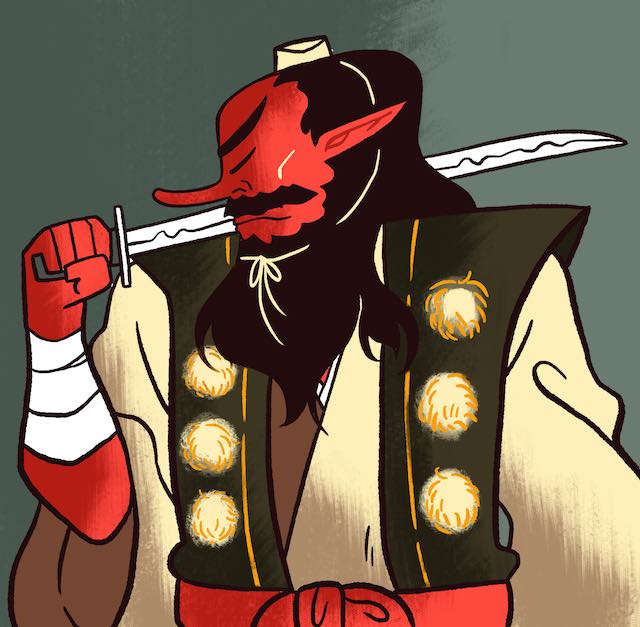
In the 13th century, tengu begin to appear in the guise of yamabushi – ascetic mountain priests. Some of the clothing tengu are depicted wearing now is based on the garb traditionally worn by yamabushi. But unlike these humble hermits, tengu want to be worshipped by humans.
This is also when tengu start to get their reputation for skill in martial arts, including the story that the samurai Minamoto no Yoshitsune learned his famed swordsmanship from the tengu Soujoubou. Tengu also start abducting children around this time, an important feature of their tales we'll look at in-depth later.
Tengu begin to look more humanlike around the 14th century, which is when the long-nose version starts to appear. As one scholar notes, animal-shaped gods and demons have a tendency to grow more human – maybe this is because they're much more useful in stories that way.
This evolution definitely happened to the tengu: first they were birds of prey, then men with bird heads, who later also had bird bills, and finally the bill morphed into a long nose. Images of the other kind of tengu didn't disappear, though, eventually leading to the modern idea that there are two kinds, with the more human tengu being superior.
As they become more human, there are now stories of individual named tengu that live on certain mountains, who may be good or evil. Their goals become broader, of disrupting human society in general – especially causing wars – instead of just focusing on messing with Buddhism. By the 17th century stories begin to describe tengu as having great physical strength.
19th Century to Modern Times
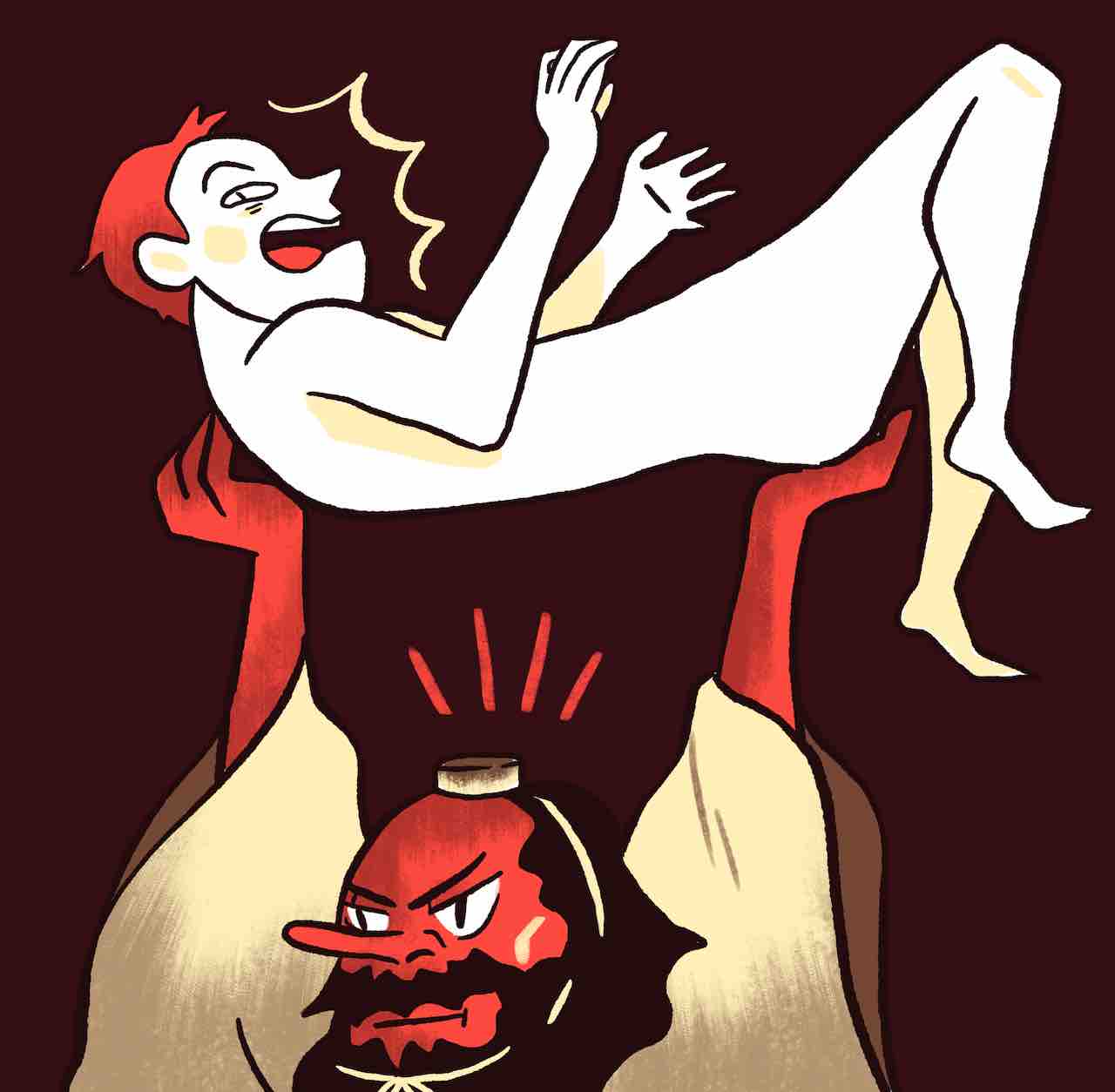
As we get closer to modern times the stories look more and more familiar. By the 19th century, it seems like there's more of an emphasis on flying in the stories, which is one of the things that sets tengu apart from other yokai. Tales tell of tengu abductees falling from the sky. In an 1810 story, a naked man supposedly fell from the sky in Asakusa. He explained that he had left Kyoto two days before on a pilgrimage and was carried away by a tengu. The skeptic might think this is a pretty good way to distract people from wondering why you are lying in the street naked, but hey, who knows? There are also tales where a priest suddenly transforms into a tengu, growing wings and flying away. Tengu are said to control rain, wind, and thunder: they cause raging storms when they are angry and can make whirlwinds that carry people up into the air.
There are also stories where tengu are good, or where their anger can be placated. Maybe now that they'd become so powerful, people needed ways not to be so frightened by them. They are seen as guardians of the forests they live in, but woodcutters could supposedly placate them after cutting down trees with offerings of ricecake or fish. There’s a story of a monastery where the garden was always clean without anyone caring for it or sweeping. All the doors and gates were left open because thieves who came in couldn’t find their way out. All this, thanks to one protective tengu.
The Mysterious Tengu Kanji
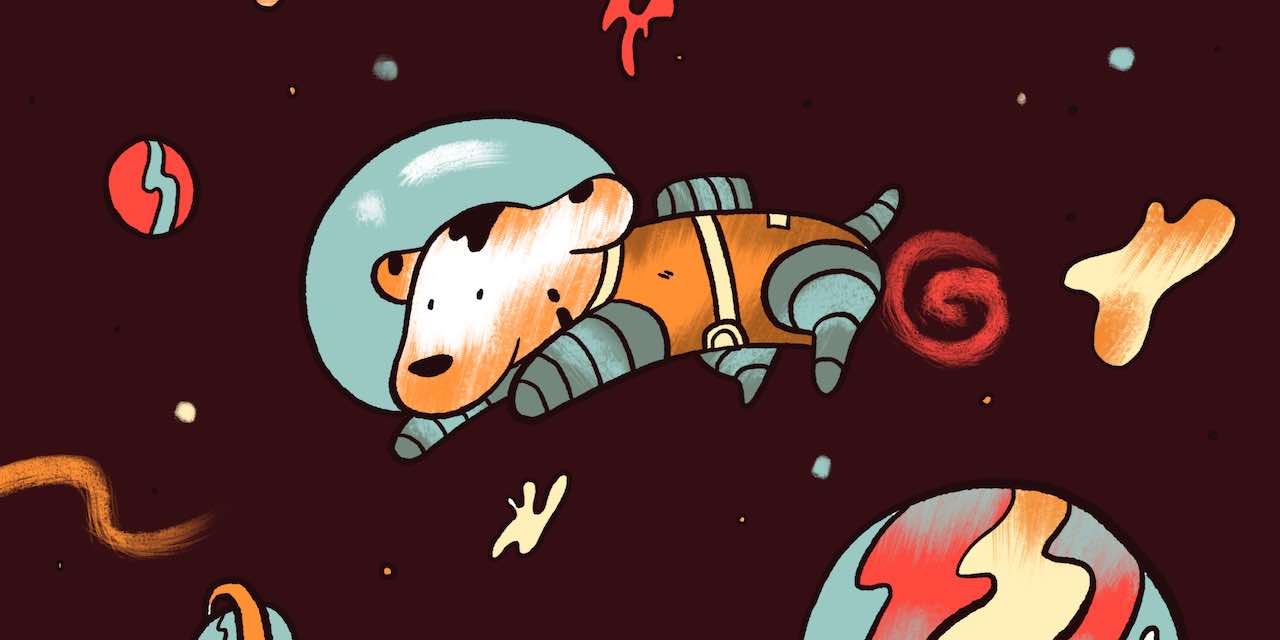
Once we know the history and characteristics of the tengu, there’s an obvious question: What's the deal with the kanji used to write its name?
- 天狗(てんぐ)
- Tengu
The kanji for the word tengu means "celestial dog." The tengu is somewhat celestial (it flies). But even though its image has changed over the centuries, there's never been anything doglike about it. So why is it written that way?
The first recorded use of the term in Japan is from 637, in reference to something from Chinese mythology. When some kind of noisy shooting star appeared, a monk explained it as a "celestial dog, the sound of whose barking is like that of thunder."1
The celestial dog in Chinese mythology was like a comet or meteor, accompanied by the sound of thunder, and considered an omen of war. In some stories, when it descends to earth, it takes on the form of a dog. Perhaps the closest it gets to our image of a tengu is in one Chinese story from 1672: a villager saw a creature on the roof of his neighbor's house "resembling a dog, but standing erect as a man. It had a sharp beak, the upper half of its body was red, the lower half blue as indigo. Its tail was like a broom." But this doesn't seem like a common description. In another, less dramatic and probably more realistic source, a falling star becomes "a stone the shape of a dog's head."
The kanji for tengu 天狗 means "celestial dog." The tengu is somewhat celestial (it flies). But there's never been anything doglike about it.
But wait! It gets more complicated. There's also mention in Chinese sources of the celestial dog as a more animal-like demon living in the mountains. There's even another Chinese creature called the celestial fox, and its characteristics are strangely similar to the stories told about tengu: it shapeshifts and appears as Buddha, sets fires, and has the power to possess people…
This all happened long ago and it was passed down through oral tradition. So the exact sequence of associations and changes will never be known for sure. One scholar theorizes the Japanese couldn't keep straight the difference between Celestial Dog and Celestial Fox and the former name was applied to a native creature with the powers of the latter.
Tengu Abduction: Torakichi, the Edo Period Tengu Boy
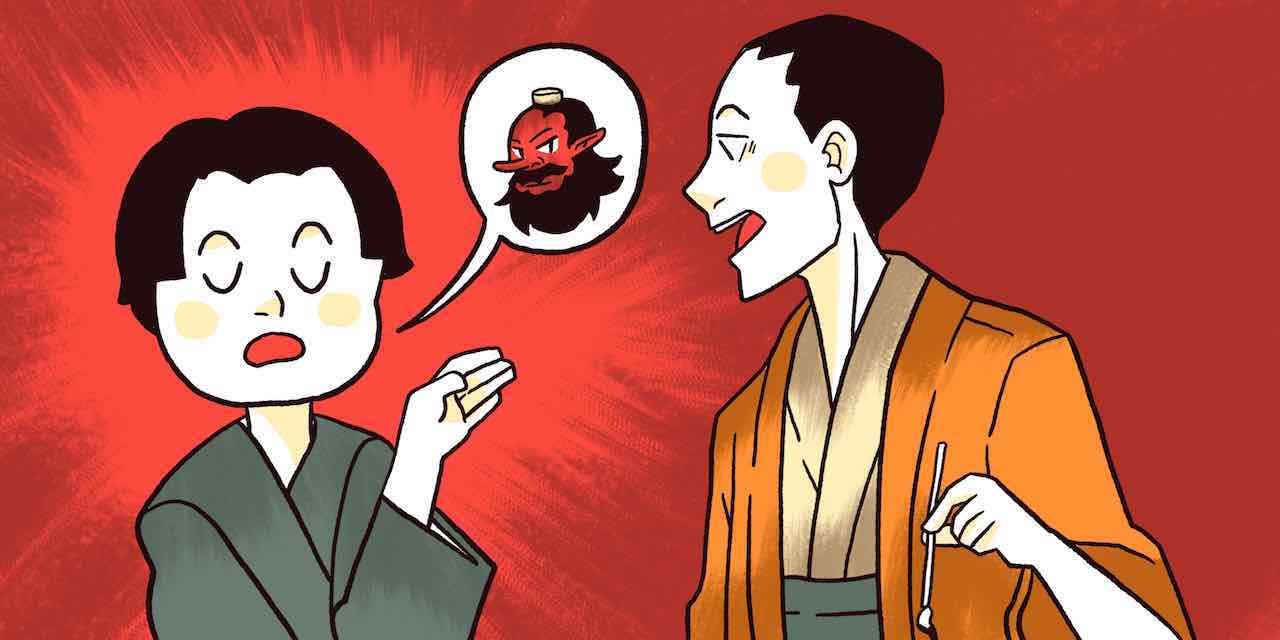
Tengu often abducted priests, but they would also kidnap children. Some were permanently damaged mentally by the experience. Others were delirious or unconscious for a few days before eventually recovering. Renowned folklorist Yanagita Kunio said the boys of the mountain village where he grew up, as late as the late nineteenth century, talked constantly of their fear of being stolen by tengu.
One of these boys came back much the better for it, though. Torakichi claimed he was abducted and trained by tengu. A Japanese writer, Hirata Atsutane, interrogated him about his experience and wrote a book that was published in 1822.
Hirata was a serious scholar who was deeply involved in theorizing about the properties of the other world. While some skepticism was beginning to take hold, this was a time when many people still took these legends seriously. As late as 1860, in advance of a visit by the shogun Iemochi, officials of the city of Nikko posted an official notice:
To the tengu and the other demons: Whereas our shogun intends to visit the Nikko mausoleums next April: Now therefore, Tengu and other demons inhabiting these mountains must remove elsewhere until the shogun’s visit is concluded.
So when Hirata heard of this boy who was telling stories of living with tengu, he wasn't interested in it as folklore – he took him at his word. So much so he abducted Torakichi from another scholar who was also interested in the story.
To Torakichi, it probably didn't matter which scholar he lived with. He was a sickly child born into a poor family, and didn't have a lot of options in life. Hirata saw Torakichi as the source of a lifetime to confirm his theories, and Torakichi was fine with this arrangement.
Torakichi claimed he was abducted and trained by tengu. A Japanese writer, Hirata Atsutane, interrogated him about his experience and wrote a book that was published in 1822.
Torakichi did an excellent job of making use of his storytelling skills to earn his keep. Hirata was interested in every mundane detail and Torakichi had them all – from how tengu made mochi to their recipe for hemorrhoid relief – as well as the spiritual questions and the things we all want to know (what did it feel like to fly?).
Some of his stories can be explained away as dramatization of rather normal things. He told one exciting anecdote of a creature that flew down and latched onto his face – it wasn't very large, but fierce and had sharp claws. This sounds a lot like a Japanese flying squirrel. Another time, he said he was attacked by a baby dragon that tried to pull him underwater, but it sounds a lot like he'd encountered a large snake. Torakichi was a city kid so natural things may have been unfamiliar and easily misinterpreted and turned into amazing stories.
Other stories seem to be based on well-known folklore, like his tales of orangutan-like monkeys with human faces that are fond of sake – he said they made a particularly delicious liquor.
But in other cases he's just a great storyteller, skilled at making up details that would excite his audience. Here's what he said about how it felt to fly:
"When one rises into the sky, one feels rather as though one is treading on soft cotton—it may be clouds for all I know. But as one is rushing along as though blown by the wind faster than an arrow, the only sensation one has is of a ringing sound in one’s ears. Some prefer flying high in the sky, others low, rather as some fish swim near the surface of the water, others down in the depths".
"Do you take off from a mountain peak, or the top of a tall tree?"
"Not necessarily, You can take off from anywhere you like."
"Is it cold or hot up in the sky?"
"When you first leave the ground it gets gradually colder, but once you are past the cold pole it gets extremely hot. When you are just passing between the cold and hot regions you feel cold from your waist downwards as though you are standing in water, and burning hot above. When you get up still higher, entirely into the hot region, your hair begins to go into tight curls like those on a Buddha image. And when you get up really high you find very calm weather, with no rain or wind."
He was also good at telling Hirata what he wanted to hear, or making up great rationalizations when he didn’t. When Hirata says Torakichi’s description of a trip to the moon doesn't match what Hirata knows about the moon:
Torakichi laughed and said, "Your theory is flawed because it’s based on information you found in a book. I don’t know about books; I speak from seeing it up close."
And here's a particularly hilarious example of Torakichi telling Hirata what he wants to hear ("my master" refers to the tengu):
Also, since I [Hirata] find it very annoying when my nose hairs grow way out of my nostrils, I keep tweezers close by me so I can readily pluck those hairs. Upon seeing this Torakichi said, "Long nose hair is a sign of long life and my master believes they should never ever be plucked. My master’s nose hair is extremely long. Five or six have grown out of both nostrils and are so long that they are indistinguishable from his moustache. The master takes great care of that nose hair."
Torakichi's story has an ironic ending: After Hirata lost interest in him, Torakichi eventually found another way to earn his keep: as a Buddhist priest.
Tengu in Pop Culture
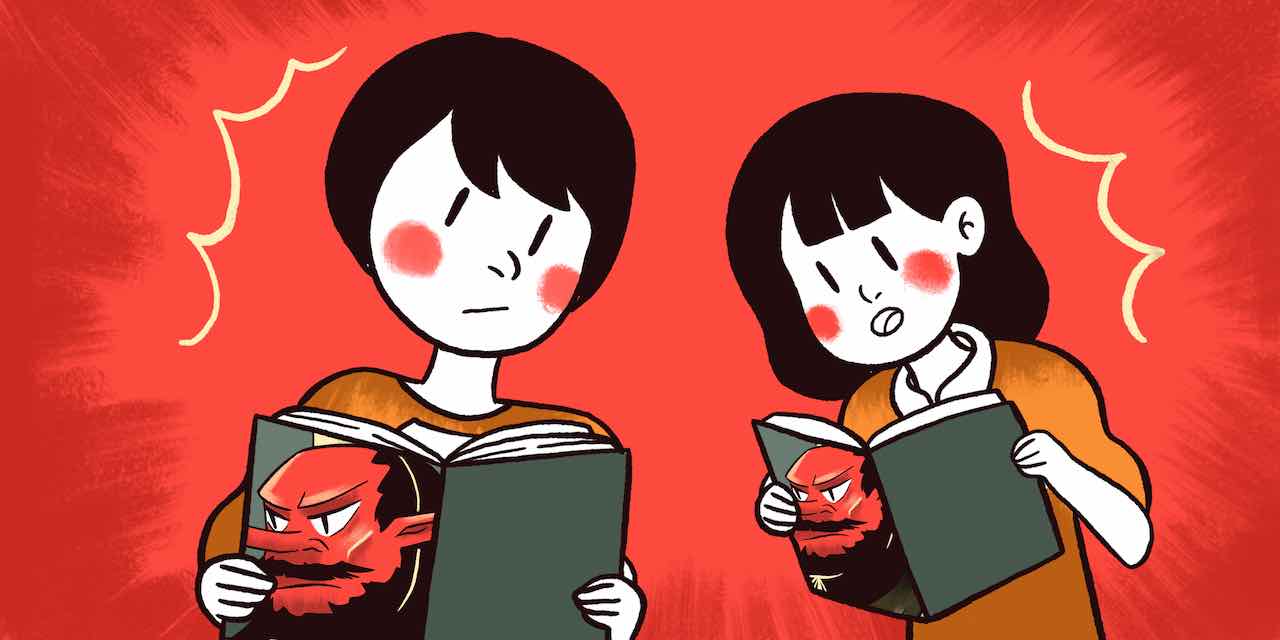
The tengu has developed into such a rich and complicated character, it's no surprise it's still being widely used today. They appear in countless manga, anime, and games. Pretty much any storyline or setting that involves yokai will throw in at least one, so there are far too many to list. But here are a few examples where tengu are particularly important characters:
-
The Eccentric Family: This is a tengu anime based on a novel by Tomihiko Morimi that aired in 2013 (a second season was recently announced). It's about a family of tanuki living in modern-day Kyoto and their interactions with the human and tengu world. One of the characters, Benten, is a young woman who was abducted and trained in the arts of the tengu, including flight – a modern twist, since children who learned the tengu's powers in the old stories were boys.
-
Black Bird: If you're a fan of sexy vampire fiction, this is the tengu story for you. It’s a manga about a teenage girl who discovers her blood gives incredible powers to demons who drink it, and her childhood sweetheart is actually heir to a tengu clan, whose leader is prophesied to have her as his bride. He protects her from the other demons who are constantly attacking her – eating her flesh also confers immortality, which complicates matters even more – and this sexy tengu fellow heals her by licking her wounds. Enough said, right?
-
Kamisama Kiss: Tengu are important characters in the manga and anime Kamisama Kiss. One, called Kurama, has a career as a pop idol whose act is he is a "fallen angel," with goth makeup and wings everyone assumes are part of his stage costume.
-
Tactics: An onikui tengu, or oni-eating tengu, is one of the main characters in the manga and anime Tactics. The other main character, Kantaro, is your typical "kid who can see yokai when no one else can." In a nice twist on the cliche, he grows up to be a folklorist. The tengu is rescued from captivity by Kantaro, but he's lost his memory, and is conflicted between his relationship with Kantaro and his desire to regain his powers.
Famous Tengu and Where to Worship Them

As tengu stories evolved to give specific tengu names and stories, apparently there was an irresistible urge to rank which tengu were the best.
The three greatest tengu, according to the philosopher Hayashi Razan, were:
- Soujoubou of Kurama (Kyoto)
- Taroubou of Atago (Kyoto)
- Jiroubou of Hira (the Hira Mountains are west of Lake Biwa)
Soujoubou of Kurama is particularly significant. Sometimes called King of the Tengu, he was the tengu who taught swordsmanship to Minamoto no Yoshitsune. There's also a legend that the founder of Aikido, Morihei Ueshiba, learned martial arts from this tengu. Tengu Geijutsuron 天狗芸術論, (The Demon's Sermon on the Martial Arts) by Issai Chozanshi, an eighteenth-century samurai, is a collection of parables presented as the story of a swordsman who converses with a tengu on Mt. Kuruma about the martial arts philosophy.
That’s not the only list, though. It's clear from the history that way too many dead guys spent way too much time thinking about tengu. And if you think the urge to obsessively make numbered lists of things is a product of the Internet, think again. We also have the 17 great tengu listed in the 18th century Tengu Meigikou, the list of 48 tengu in the Edo period (called Tengu Tate 天狗経 or Tengu Sutra), and this list of eight, which has become more or less traditional nowadays (the suffix "-bou" at the end of most of the names means Buddhist priest):
Soujoubou of Kurama is particularly significant. Sometimes called King of the Tengu, he was the tengu who taught swordsmanship to Minamoto no Yoshitsune.
-
Atagoya Taroubou 愛宕山太郎坊 – Kyoto: This tengu protects Atago shrine, which is devoted to the deity Izanagi. He was assigned to this job by Buddha about 3,000 years ago and considered the representative of all the other tengu in Japan. He was apparently nameless – or his name wasn't known for a lot of that time. The name is first mentioned after a big fire in Kyoto in 1177 that people believed he caused, which was called "taroushoubou 太郎焼亡" (The Tarou Fire).
-
Kuramayama Soujoubou 鞍馬山僧正坊 – Kyoto: This is our old friend Soujoubou, King of the Tengu, mentioned above.
-
Hirasan Jiroubou 比良山治朗坊 – Shiga: This tengu originally resided on Mt. Hiei and was supposedly as strong as Taroubou, but when powerful monks moved in, he up and moved to Mt. Hira. He appears in a few violent tales in the late Heian period, doing things like attacking a dragon, and grabbing a monk and throwing him into a cave where a dragon lived.
-
Izuna Saburou 飯綱三郎 – Nagano: This tengu is said to boast of more apprentices than Mt. Fuji’s "Fujitarou." And no surprise, since some useful miracles are attributed to him. For example, once when all of Japan suffered a poor harvest, he saved many lives by distributing the sand from the top of the Izuna mountain called "iizuna 飯砂 a kind of Tengu manna similar to brown rice. The tengu Saburou is also known as Izuna Gongen. An interesting/confusing combination of Buddhism and Shinto, Izuna Gongen and Akiba Gongen (Sanjakubou, Mt. Akiba) are deities depicted as tengu riding on a white fox. Or maybe they're the same deity – there are different theories. But a tengu riding a white fox is so incredibly awesome, who cares about the details?
-
Sagami Ooyamahoukibou 相模大山伯耆坊 – Kanagawa: Another tengu who didn't stick with his original mountain, Ooyamahoukibou originally lived at Houki Daisen mountain in Tottori. The original tengu of Soushu Ooyama mountain was Sagamibou. But, Sagamibou had to move to Shiromine in Kagawa on the Shikoku island to comfort the spirit of the emperor Suutokujoukou, so Ooyamahoukibou moved in as a successor to the post.
-
Hikozan Buzenbou 彦山豊前坊 – Fukuoka: He is known as the general manager of Kyushu tengu. He keeps track of who's naughty and who's nice, and will send one of his tengu staff to punch out a person for being snobby and greedy. But if you worship tengu yokai properly, they'll get together and make your dreams come true.
-
Oomine Zenki 大峰前鬼 – Nara: Zenki and Goki were a married couple of oni (demons) who originally did your usual evil demon things. But they reformed when En no Ozuno, the founder of Shugendou, hid one of their children in an iron pot. From this, they understood the sadness of the parents whose children they had killed. From then on, they protected En no Ozuno, and Zenki later became a tengu.
-
Shiramine Sagamibou 白峰相模坊 – Kagawa: We've already heard of Sagamibou in the story of tengu number 5 – he's the one who moved to Kagawa on the Shikoku island to comfort the spirit of the emperor Suutokujoukou for all eternity. The emperor died after eight years of exile on Shikoku, longing all the time to return to Kyoto.
Finally, since I'm the one writing way too much about tengu this time, I’ll take a turn picking the ones I think are most important. My pick is the tengu of Mt. Takao because they're easiest to visit, an easy day trip from central Tokyo. The god enshrined here is Izuna Daigongen, who combines the elements of five deities: Fudo Myo-o, Karuraten (Garuda, a divine bird), Dakiniten (a demon that feeds on human hearts), Kangiten (a fertility deity with the head of an elephant) and Benzaiten (the deity of water, music and victory in battle). Statues of two tengu, one of each type, stand in front of Izuna Gongen-do Hall.
Tengu Festivals
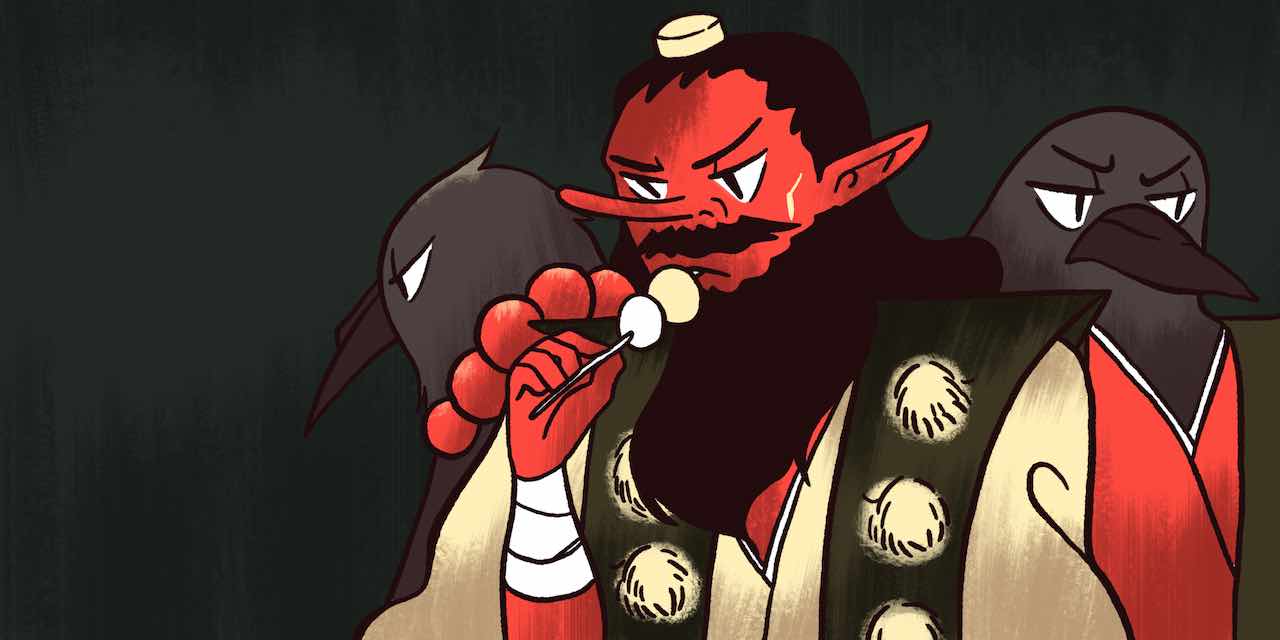
Along with shrines on mountains where tengu reside, there are Japanese festivals that feature them. Here are some to think about fitting in to your next trip to Japan.
The popular neighborhood of Shimokitazawa in Tokyo holds a tengu festival every year. Shimokita Tengu Matsuri しもきた天狗まつり includes a tengu parade and takes place at the winter holiday of Setsubun. It's based at the Shinryuji temple not far from Shimokitazawa Station, where legend says the guardian deity Doryosatta became a tengu to protect this temple.
"Do not hang laundry outside on the day of the festival. The tengu gets upset if he finds out and will scowl fiercely at your laundry until you take it away."
–Furubira Tengu Festival Rule No.2
There is a Mt. Tengu in Otaru. With a name like that, of course you have a tengu festival. Mt. Tengu in Otaru is considered one of the three most beautiful night view spots in Hokkaido (places of scenic beauty are another thing the Japanese have been making listicles about for a very long time). Don't get too excited about seeing actual tengu on Mt. Tengu, because there are three main theories about why it's called that – yeah, one is that tengu live there, but the others are that the mountain looks like a tengu, or that people who moved there from Tohoku thought it looked like the Mt. Tengu in their home town.
In Numata City, Gunma, there's a festival with a huge mikoshi in the shape of a tengu mask. Only women carry it – it takes 200-300 of them – because it's supposed to ensure easy childbirth. The town is near Kashouzan Mountain, which is known as a place where tengu live.
At the Donki Festival in Toyokawa city, a fox, a red tengu, and a blue tengu chase after women and children with a donki 鈍器, which is a stick with paint on it. Getting the paint on you is supposed to ensure good health.
A tengu festival that goes back to the Edo period takes place in Osaka in October. Getting hit by the tengu will help women have good children, and children grow up to be strong and wise.
Furubira in Hokkaido holds two tengu festivals, in the summer and in the fall. Both end with the tengu walking through a bonfire. According to one blogger who wrote about it, there are three rules for watching this festival:
-
Do not watch the festival from a higher place. Looking down on God is rude. If the tengu find out you are doing this, he gets mad. The tengu will stop moving if someone goes above him.
-
Do not hang laundry outside on the day of the festival. You shouldn't show dirty things when God passes by. Again, the tengu gets upset if he finds out and stops walking. He will scowl fiercely at your laundry until you take it away.
-
Do not walk in front of the tengu. It's rude to walk in front of God. It's a basic rule everybody in Kotohira knows. Yet, kids like breaking rules, right? There was a boy who intentionally passed in front of the tengu and tried to run away, but the upset tengu caught him and poked his butt with the spear. Despite the punishment, other kids looked at the kid as a sort of hero, so he gained something to show off to others.
After everything we have learned about tengu, I don't even want to think about what would happen if one scowled at my laundry, so if I were you I would definitely follow those rules.
